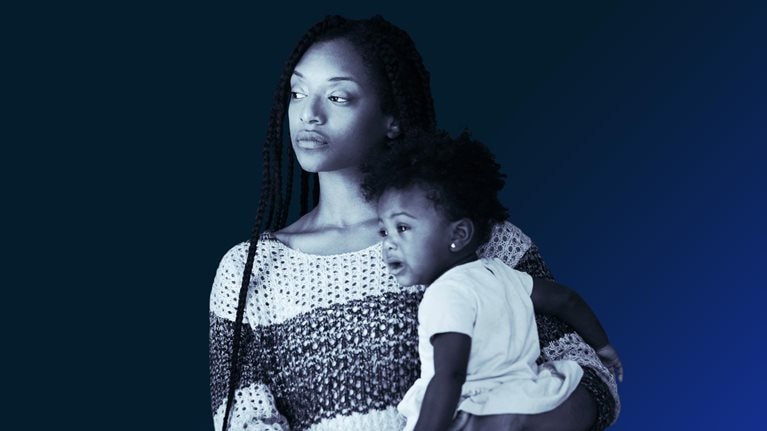In 2019, an estimated 270 million women worldwide who wanted to avoid pregnancy were not using modern contraceptives.1 Unmet needs for family planning is especially difficult to address among adolescent girls and young women (AGYW, defined as 15 to 24 years old), who face high and distinct barriers to obtaining modern contraceptives compared with other age groups. Self-care can be a powerful approach to addressing their needs. This article focuses on adolescent girls and young women in Africa, given the region has the highest projected growth of adolescent births2 and self-care interventions need to be tailored to the specific needs, contexts, and preferences of each user group.
From 2012 to 2019, the use of modern contraceptives among African AGYW rose to 25 percent from 19 percent.3 However, at 14 percent the continent’s rate of adolescent (15 to 19 years) pregnancy remains higher than other developing regions, such as, Asia (5 percent). A full 45 percent of African adolescent pregnancies are unintended.4
The inconsistent or lack of use of modern contraceptives among sexually active African AGYW has negative effects on women’s and girls’ health and reduces their economic potential. It is particularly problematic among adolescent girls, who are at high risk of preterm births and dropping out of school due to pregnancy. Each additional year of schooling leads to an average 12 percent rate of return—value of life-time earnings of the individual to the net present value of costs of education—for women.5 Addressing unmet family planning needs is therefore an important step towards achieving gender equality and boosting the continent’s social and economic progress.
The reasons for the inconsistent or lack of use of modern contraceptives are extremely complicated, and a number of barriers prevent AGYW from getting the contraception they need and planning for their futures: prohibitive cost; perceived or real disrespect and judgment from healthcare providers; and a lack of understanding about modern contraceptives, including which options would be best for an individual, what to expect from side effects, and even why contraception is important. Compounding these issues is the rapid growth of the AGYW population in Africa, which is expected to increase by 50 percent within the next 20 years.6 We must find better ways to meet these girls’ and young women’s needs.
In the first quarter of 2020, we worked with private- and social-sector partners in Kenya to better understand the barriers to contraceptive use and how to overcome them for AGYW. Four key takeaways emerged from this work:
- Self-care can be effective in overcoming the challenges faced by AGYW along their family-planning journeys by empowering AGYW to better understand their needs for contraception and own the decisions to address them.
- This population’s nuanced needs and experiences require tailored solutions; a one-size-fits-all approach to designing interventions isn’t effective in addressing AGYW’s unmet needs for contraception.
- Interventions should be comprehensive in order to drive consistent use of modern contraceptives—covering the family-planning journey end to end and encompassing awareness, access, and continued usage.
- Strong collaboration among public- and private-sector players can help implement an end-to-end solution to achieve consistent use of modern contraceptives, due to the range of capabilities required for such a solution.
As players begin to design or refine interventions for the AGYW population, they can start with an understanding of what self-care is and use this understanding to develop effective concepts.
What is self-care, and what approaches have been used before?
Self-care is becoming more prevalent across industries to empower consumers and increase convenience. Consider healthcare, where we are seeing a shift to self-service as patients have more access to digital tools and information on managing their health. For example, health-system portals allow patients to schedule appointments, access their medical history, update forms, review doctor recommendations, and ask questions. In financial services, digital solutions such as mobile payments have empowered women to take control of their finances by overcoming barriers in dealing with formalized banking institutions.7
In family planning, we define self-care as the ability of individuals, families, and communities to promote and maintain sexual health and prevent unwanted pregnancies, with or without the help of a healthcare provider.8 Empowering AGYW through self-care requires opening doors for them across three stages:
- Awareness: Ensure a girl or woman understands her family-planning needs and the options available
- Access: Provide access to contraceptives that best address her needs
- Usage: Empower her to administer and manage the contraceptive method she chooses
Many existing approaches to increase use of modern contraceptives emphasize “push” interventions from healthcare providers. But some options are advertised more than others, leaving many options unknown to potential users. Thus, these approaches don’t always meet the full needs of the users. Self-care, rather, is centered on the individual, empowering her to be more self-aware and to manage her own health.
Would you like to learn more about our Public & Social Sector Practice?
Why does self-care matter in addressing unmet contraceptive needs of adolescent girls and young women?
Our research revealed that self-care can help address barriers to AGYW’s consistent use of modern contraceptives. Although self-care shifts the responsibility to the user, the role of healthcare providers to effectively respond to user needs remains critical. Consider, for instance, two prominent barriers to consistent use of modern contraceptives and how self-care can help address them.
Stigma: The stigmas associated with contraceptives and family planning vary based on AGYW’s ages and marital statuses. For example, religious and cultural beliefs create a systemic bias against sexually active and unmarried adolescents and young women. This group, then, often struggles to find someone willing to provide information about contraceptives or even to get pharmacists to sell them. Meanwhile, married women face pressure to have children and may be stigmatized for delaying pregnancy.
Teaching self-care and providing options for self-service can help AGYW access family-planning services and methods while maintaining privacy and discretion. For example, digital tools can be harnessed to provide information, counseling, and access to contraceptives. Additionally, with increased self-awareness, AGYW are more likely to be persistent when seeking care.
Side effects: Many AGYW forego contraceptives because of a fear of real or perceived side effects. A self-care approach empowers AGYW with a better understanding of the full range of methods available and their potential side effects. This understanding then allows a user to choose modern contraceptive methods consistent with her preferences regarding these side effects. And with an increased awareness of her needs, a user is more likely to accept some side effects, for example, from the birth control pill or an IUD. Furthermore, if an AGYW tries one method and finds the side effects intolerable—since, for example, women’s bodies react differently to hormones—she will be more likely and able to seek out another method.
Developing and implementing effective self-care concepts
Most family-planning interventions treat every 15- to 24-year-old the same way. While a few programs are more personalized—such as Shujaaz, an East African media platform that tailors communications to different groups among the adolescent-girl population—these are the exception.
An important lesson from our work is the need to move beyond such one-size-fits-all approaches and instead design tailored solutions to match different needs within the AGYW population. This lesson applies broadly to partners involved in family planning, including health providers, policy makers, and donors. Our work helped us understand the nuances within the AGYW population that are critical for designing self-care concepts to address specific barriers by segments.
Throughout this process, we found the combination of practices and tools used by the consumer packaged goods (CPG) sector (for example, user segmentation) and human-centered design to be useful and practical.
Understand unmet needs specific to segments
By combining different demographic and socioeconomic characteristics, we identified eight segments among AGYW in Kenya who are likely to benefit from self-care (exhibit). To understand each segment, we explored several questions to help us uncover what she knows, what she believes, and what she experiences within each stage of her family-planning journey:
- What is she currently getting? What types of information does she receive and what methods does she currently use or have access to?
- Through which channels does she receive information and access? Where does she get her information and contraceptives, and what sources does she trust to help her manage difficulties in using contraceptives?
- Who funds her methods? Does she use her own income, or does she rely on her partner?
- Who or what influences her decisions? How do peers, adults within her household, partners, and providers influence her?

As we explored these questions, we developed a nuanced understanding of each segment and identified the key barriers that should be addressed in the design of self-care solutions. For example, a 15-year-old girl who did not complete primary school may have difficulty learning about contraceptive methods that best suit her needs because she cannot comprehend the content publicly available at her educational level and she does not have access to adults she trusts to explain the details without losing her privacy. And while a 20-year-old unmarried university student may be aware of her needs and most available options, she might have a negative experience acquiring her method, as she’s likely to lack privacy and face judgment.
An important benefit of the self-care approach is that it empowers an individual, with proper guidance, to voluntarily choose modern contraceptives that address her family-planning needs. Therefore, the design should incorporate solutions that allow the user to select methods that best suit her lifestyle, preferences, and family-planning needs—including delaying and spacing pregnancies and protecting against STIs.

Not the last pandemic: Investing now to reimagine public-health systems
Design end-to-end self-care journeys tailored to specific segments
With a human-centered design approach, it is important to recognize who you are designing for and how the user experience drives user behavior relative to the use of modern contraceptives throughout the entire family-planning journey. Therefore, to become consistent users, AGYW need an integrated solution that addresses their needs at every stage of their family-planning journey. If a girl learns about her needs and is motivated to become a new user of modern contraceptives, her inability to afford or acquire contraceptives should not be a roadblock. Similarly, for new users of contraceptives, difficulties in managing side effects should not hinder them from consistent use.
Consider Aisha, whose primary concerns are convenience and privacy and whose biggest barrier is consistent use. A comprehensive self-care use case for her might be a digital app that provides her with information on available methods, options for having contraceptives delivered, and tools to manage use. Selina, on the other hand, lacks basic awareness of the need for modern contraceptives and which types are available—and may lack access due to affordability and provider bias. So a solution for her should provide youth-friendly content on contraceptive methods and family planning, options for inexpensive or free contraceptives, and access to trustworthy experts.
An end-to-end approach empowers users to build awareness of their own needs, provides access that is convenient for them, and provides them with tools to manage any side effects for continued use of contraceptive methods that suit her.
Iterate on concept designs
It is important to iterate on concepts after the initial design—validating and adjusting the design based on feedback from the user. Imagine, for example, sharing a prototype of the digital app with Aisha. She can provide feedback on her experience navigating the app and validating that the options offered truly meet her needs for awareness, access, and usage. She can also highlight her preferences in the design, such as an option to preorder contraceptives so she can conveniently pick them up at a pharmacy without waiting in line.
To iterate on the self-care concepts, we worked with local partners to develop plans to test various elements of the use-case design with girls in the Aisha and Selina segments. The plans incorporated low-fidelity and high-fidelity prototypes9 for testing in focus groups, labs, and field settings. For example, in a lab setting, we designed tests to validate whether incorporating a needs analysis in the app will influence Aisha’s selection of modern contraceptive methods that best suit her preferences and lifestyle needs. We also developed high-fidelity prototypes of the end-to-end app to get feedback on the user’s front-end navigation experience. For Selina, we designed tests to determine whether engaging with different types of experts—pharmacists, providers, youth counselors—would result in significantly different outcomes in her motivation to become a new user of modern contraceptives.
For field testing, we leveraged the capabilities of local partners to integrate their current interventions within each stage of the journey to deliver an end-to-end solution for the user.10
Collaborate for efficiency and effectiveness
Our research highlighted that the efforts that will have the most success will require collaborations among stakeholders. Implementing an end-to-end self-care use case may seem daunting, but it can be more easily achieved by integrating multiple actors across the journey who might already have interventions within one or more stages of the user journey, and there is an opportunity to harness existing resources to quickly bring solutions to those in need.
Moreover, the successful delivery of end-to-end solutions tailored to the specific needs of each user requires a wide range of specialized skills and capabilities that one single player alone is unlikely to bring. In fact, traditional public-health capabilities (including traditional marketing and large networks of healthcare providers) can be complemented with skills such as social media marketing, analytics, and behavioral science that are more often found in private-sector start-ups. Partnerships that combine all these skills and capabilities into integrated teams are more likely to successfully implement and iterate. Therefore, they are more likely to meet users’ needs and increase the number of AGYW who become not only new but also consistent users of modern contraceptives.
Self-care could be the future of family planning for adolescent girls and young women—a future where each girl or woman develops a deep understanding of her own needs for contraceptives, makes an informed choice of methods, and feels empowered to acquire contraception and request assistance when she needs it. For this future to be a reality, public and private players can join forces to design and implement effective self-care interventions that address the unique needs of the user throughout her end-to-end family-planning journey. Such interventions can result in higher user satisfaction and, critically, more consistent use of modern contraceptives.

